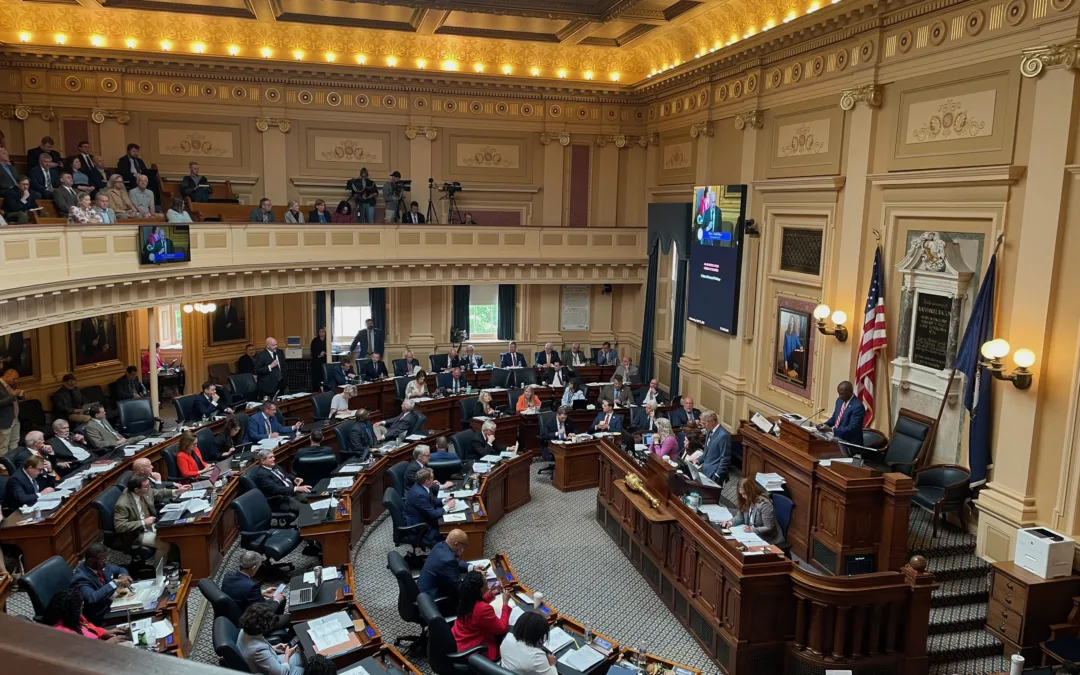Check out the rest of our series on how Virginia laws affect women here.
Women in Virginia make 79 cents for every dollar paid to a man, a difference that adds up to nearly $12,000 per year, according to the National Partnership for Women & Families.
As a result of the gender wage gap, Virginia women lose out on more than $24.1 billion in earnings every year, according to a 2018 analysis by the National Partnership for Women & Families.
If you’re wondering what closing the wage gap would mean, the short answer is that it would be life-changing for women in Virginia.
Here’s the long answer: If the gender wage gap were closed, on average, a woman working full time in Virginia would be able to afford 86 more weeks of food for her family, more than six additional months of mortgage and utilities payments, nearly one additional year of tuition and fees for a four-year public university, over 9 more months of rent or nearly 14 months of childcare each year.
The wage gap is particularly bad for women of color. In Virginia, black women are typically paid only 59 cents for every dollar paid to a white, non-Hispanic man, while Latinas earn only 53 cents for every dollar white, non-Hispanic men earn.
The wage gap is also a key driver of female poverty and income inequality. According to TalkPoverty, a project from the Center for American Progress, the poverty rate of women between the ages of 18-64 in Virginia is currently 11.6%. If women in Virginia were paid the same as men, that poverty rate would be reduced by more than half.
Despite the reams of data highlighting the enormous consequences of the gender wage gap, there’s been little progress in recent years. In fact, things are trending in the wrong direction.
Women in Virginia earned 84% of what men did in 2014, compared to the 79% they now earn. Based on current trends, women in Virginia won’t achieve equal pay until 2075. (No, that is not a typo.)
And it’s not as if the wage gap is specific to just one industry or location. It persists in all industries and occupations and at all education levels across all 50 states and the District of Columbia.
So is anything being done about it?
At the federal level, Rep. Bobby Scott (D-Va.) and other Democrats championed the passage of the the Paycheck Fairness Act, which would close the gender pay gap by closing loopholes in the Equal Pay Act of 1963, which aimed to ensure men and women receive equal pay for equal work.
The bill is unlikely to pass the Republican-controlled Senate, however, despite the best efforts of Virginia’s Democratic Sens. Tim Kaine and Mark Warner.
Democrats in Virginia’s General Assembly haven’t had much luck, either.
State Sen. Jennifer Boysko (D-Fairfax) has also introduced legislation to address the gender wage gap in 2018 and 2019, but Republicans defeated both bills.
As it stands, the state currently has very limited protections for women, according to the American Association of University Women. Virginia’s protections do not cover all or even most employees, do not include protected classes in addition to sex, do not prohibit retaliation for discussing wages or taking legal action to secure equal pay, and do not prohibit using salary history in hiring.
Advocates say that the only way to truly to resolve the gender wage gap is to also provide paid leave, raise the minimum wage, and protect women’s reproductive rights.
Virginia’s current laws on these issues disproportionately hurt women, and attempts to change these laws were blocked by Virginia Republicans in each and every case.
Until those laws change, it’s unlikely there will be significant movement in the gender wage gap. But advocates are determined to bring about that change and to do it long before 2075.
Politics

Youngkin, Democrats to start over on budget talks
The Republican governor stood with Democratic leaders in the General Assembly on Wednesday in a bid to ease tensions over their budget debate....

VIDEO: Domestic abuse victims speak out against the gun law bills Gov. Glenn Youngkin vetoed
Senate Bill 47 and House Bill 46 aim to close the loophole that allows offenders to transfer their firearms to someone else instead of relinquishing...
Local News

Virginia verses: Celebrating 5 poetic icons for National Poetry Month
There’s no shortage of great writers when it comes to our commonwealth. From the haunting verses of Edgar Allan Poe, who found solace in Richmond's...

Join the fun: Recapping Family Literacy Night’s storybook adventures
When’s the last time you read a book aloud with a loved one? If it’s difficult to answer that question, then maybe it’s time to dust off that TBR...




